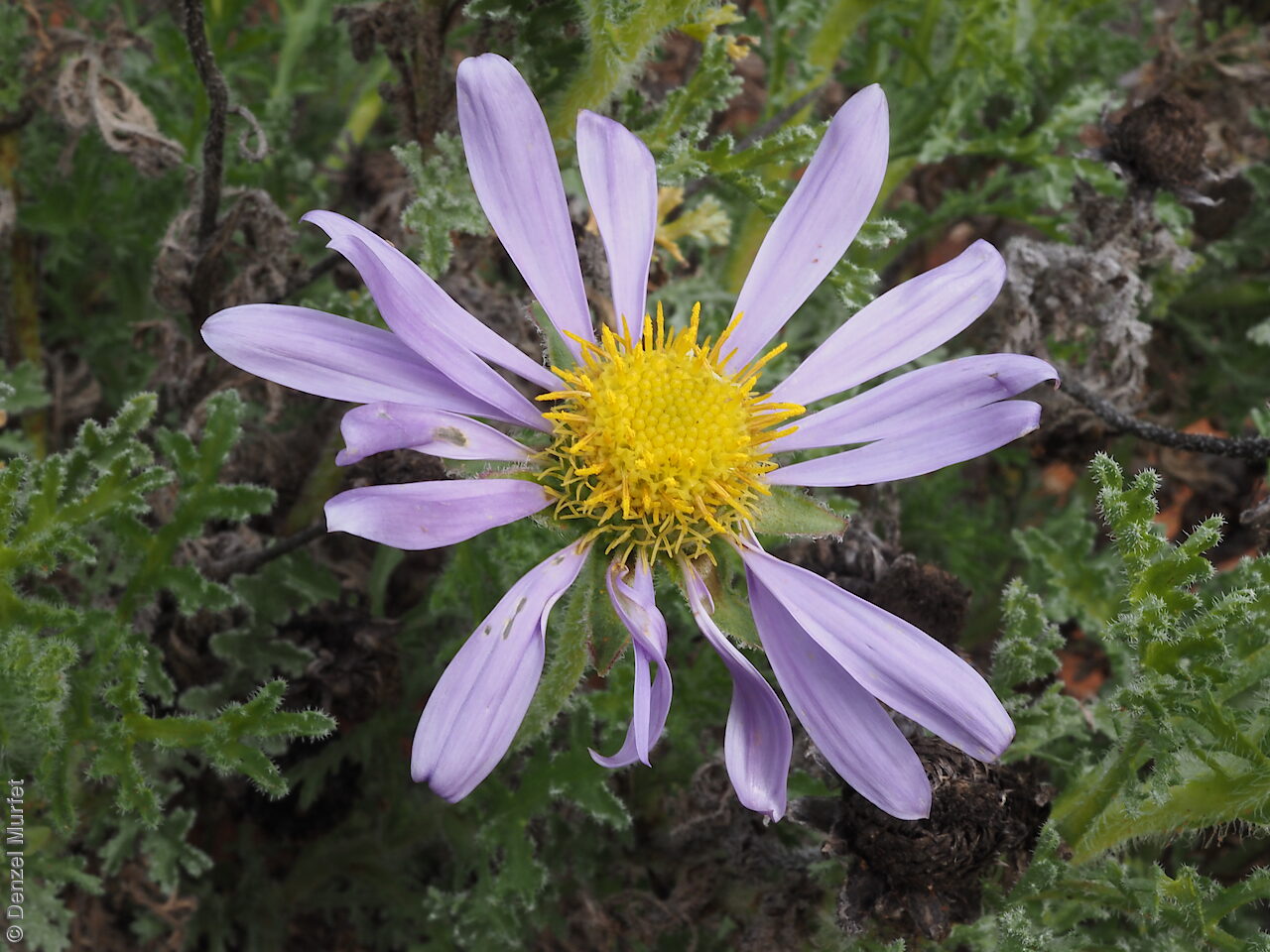












Botanical art
Common names
Koonamore Daisy
Etymology
Erodiophyllum from the genus Erodium and the Greek 'phyllon' meaning leaf; referring to the resemblance of the leaves to those of some Erodium species. Elderi named after Sir Thomas Elder (1818-1897), a Scottish-Australian pastoralist, highly successful businessman, philanthropist, politician, race-horse owner and breeder, and public figure.
Distribution and status
Found mainly in the eastern part of South Australia with old records from the west and north-east, growing on alluvial floodplains in mulga shrubland with chenopods. Also found in Western Australia and New South Wales. Native. Common in South Australia. Very rare in New South Wales. Uncommon in Western Australia.
Herbarium regions: Lake Eyre, Nullarbor, Flinders Ranges, Eastern, Eyre Peninsula, Northern Lofty, Murray
AVH map: SA distribution map (external link)
Plant description
Rough-hairy perennial forb with stout erect stems. Leaves to 10 cm long and 3 cm wide, deeply lobed and broad-toothed, bright green, hairy. Flower-heads on thick hairy stems with a large blue-violet or white daisy with yellow centre at the end. Flowering between April and November. Fruits are hard, woody, brown egg-shaped fruit-head to 25 mm long, covered with rigid spreading points. Seeds are pale brown arrow-shaped seed to 4 mm long and 2 mm wide. Seed embryo type is spatulate fully developed.
Seed collection and propagation
Collect seeds between October and May. Collect maturing heads, those that are fat, hard and turning brown. Fruit-heads can be picked from the stalk or collected from the ground. Be careful as fruit-heads can be spiny. Place the fruit-heads in a tray and leave to dry for at least two weeks. No further cleaning is required if only fruit-heads were collected. Each fruit-heads contain numerous seeds. Store the whole fruit-heads with a desiccant such as dried silica beads or dry rice, in an air tight container in a cool and dry place. From two collections, the seed viability were high, at 100%.
| Location | No. of seeds (weight grams) | Number of plants | Date collected | Collection number Collection location | Date stored | % Viability | Storage temperature |
|---|---|---|---|---|---|---|---|
| BGA MSB | 51,300 (2201 g) 28,000 (1344 g) | 100+ | 17-Oct-2007 | DJD909 | 19-Sep-2008 | 100% | -18°C |
| BGA | 9,000 (251.55 g) | 200+ | 27-May-2010 | KHB420 Eastern | 1-Jan-2016 | 100% | -18°C |
| BGA | 106,600 (2272.610 g) | 500+ | 3-Feb-2023 | DJD4157 Flinders Ranges | 20-Jun-2023 | 100% | -18°C, -80°C |
Number of plants: This is the number of plants from which the seeds were collected.
Collection location: The Herbarium of South Australia's region name.
% Viability: Percentage of filled healthy seeds determined by a cut test or x-ray.